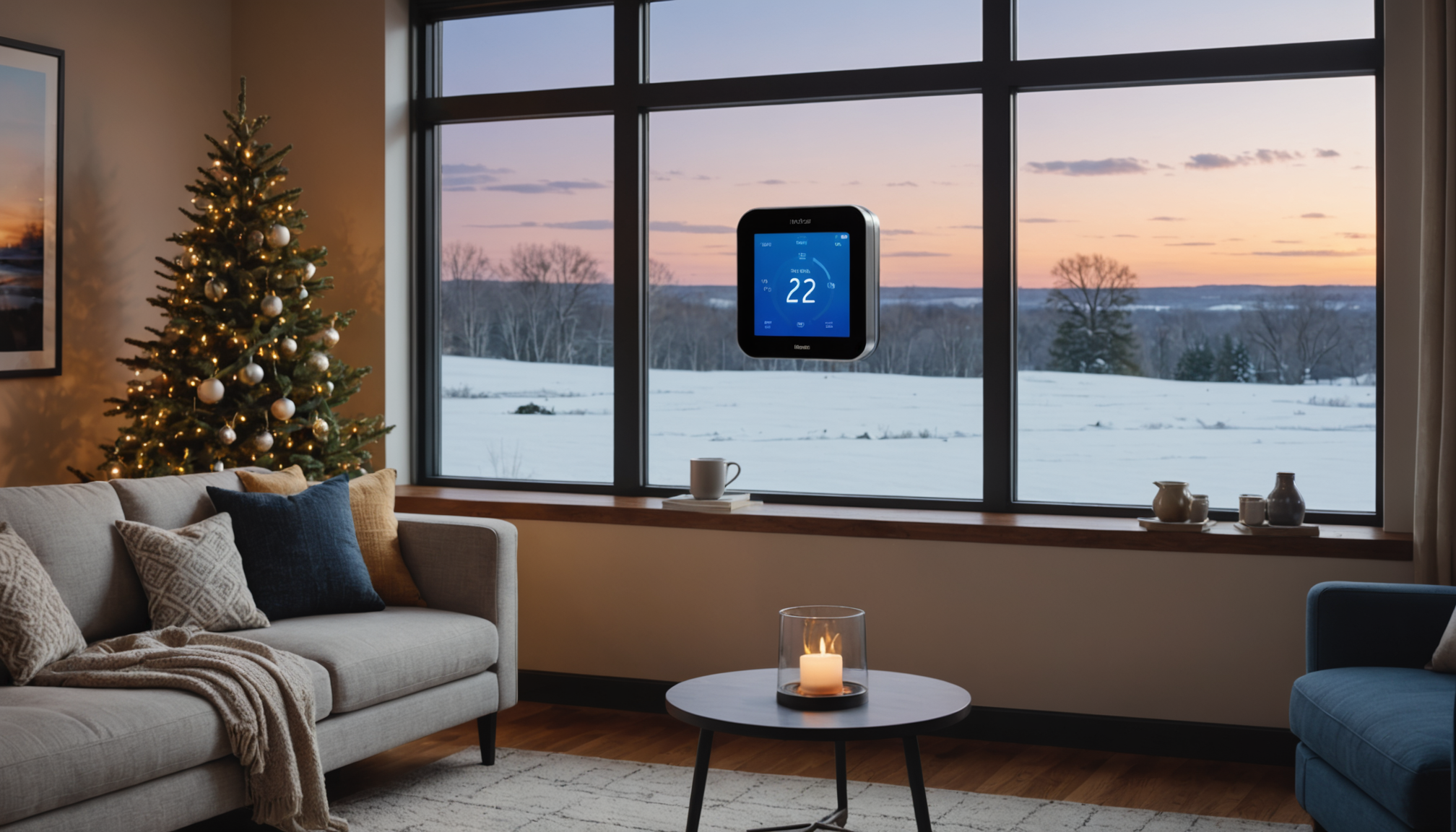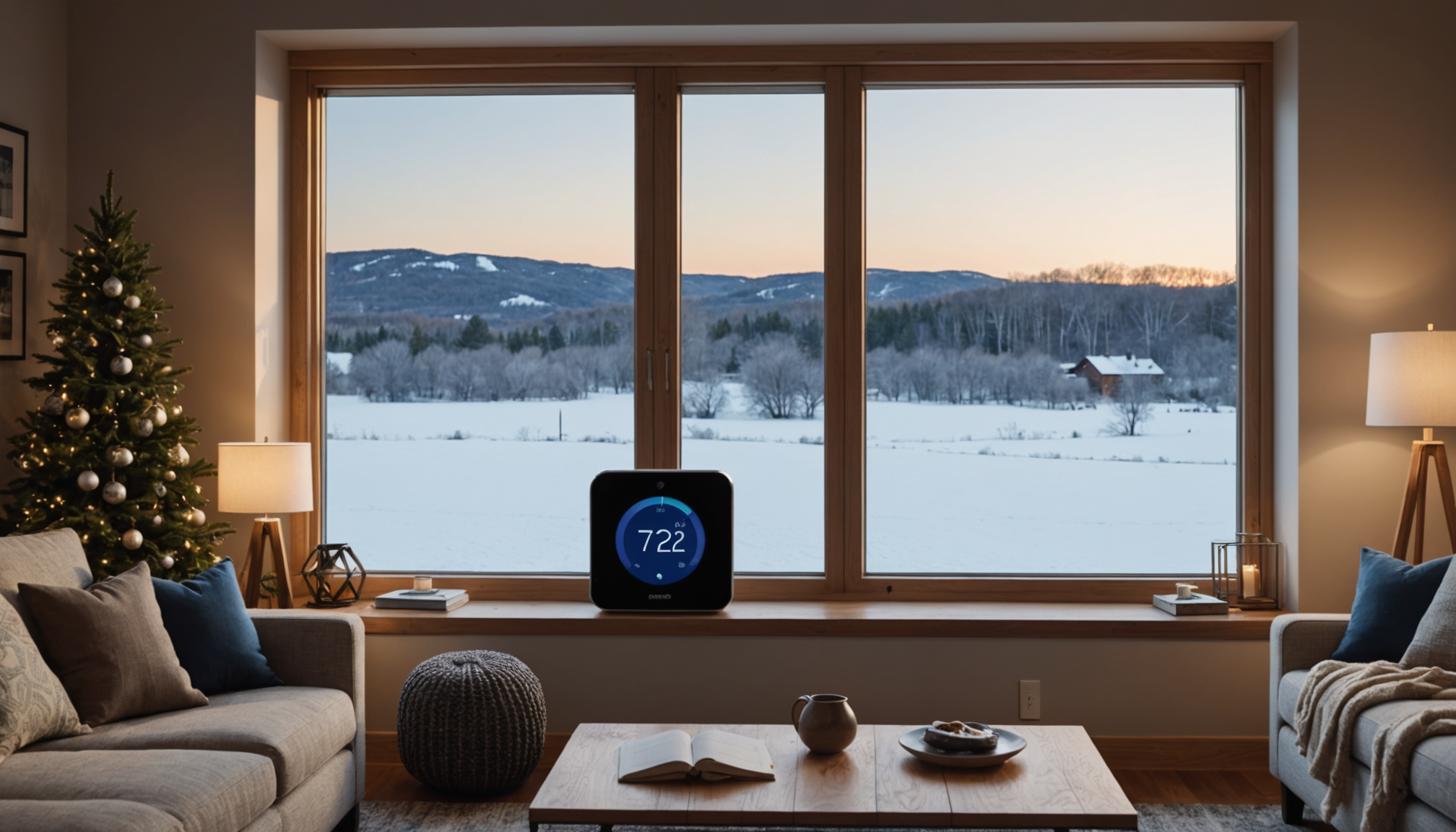Missouri experiences a varied climate characterized by hot, humid summers and cold winters, which means residents face unique challenges when it comes to maintaining comfortable indoor temperatures. Understanding this climatic diversity is crucial for homeowners who seek to optimize their energy usage without compromising comfort. By recognizing the seasonal swings that Missouri typically undergoes, you can make informed decisions about smart thermostat settings, ensuring maximum efficiency throughout the year.
A key aspect of Missouri’s climate is its continental nature, with each season exhibiting distinct temperature ranges and weather patterns. According to data from the National Weather Service, summer temperatures can soar into the 90s°F, often accompanied by high humidity levels, while winter temperatures frequently dip below freezing with occasional snowfall. This wide temperature range demands adaptable HVAC strategies that can be automatically managed using advanced smart thermostat technologies.
Given these climatic conditions, investing in a smart thermostat is a wise choice for Missouri homeowners. These devices can automatically adjust temperature settings in response to real-time weather conditions, reducing the burden on HVAC systems and resulting in significant energy savings. According to Energy Star, smart thermostats can save homeowners around 8% on heating and cooling bills, proving that understanding and adapting to Missouri’s climate can lead to both environmental benefits and financial savings.
Furthermore, customization is key. When setting up a smart thermostat in Missouri, programming it to accommodate the state’s unpredictable weather shifts, especially during transitional seasons like spring and fall, is crucial. A properly programmed thermostat can ensure your home remains comfortable year-round while optimizing energy efficiency. By choosing a smart thermostat that can accurately respond to these changes, you are better equipped to handle the climatic challenges Missouri presents.
selecting the right smart thermostat
To choose the ideal smart thermostat for your Missouri home, you first need to consider the specific features that align with your lifestyle and the state’s climate variations. Look for devices that offer advanced climate control capabilities, such as learning algorithms and geofencing, which can significantly enhance energy management and comfort. Thermostats equipped with learning technology can adapt to your household’s schedule and temperature preferences, gradually fine-tuning the settings to ensure optimal conditions without manual adjustments. This feature proves especially useful during Missouri’s transitional seasons when temperature fluctuations can be unpredictable.
Smart thermostats with geofencing capability can use your smartphone’s location to adjust the HVAC system as you enter or leave your home. When you’re away, the thermostat can switch to an energy-saving mode, and when you’re on your way back, it can begin reheating or cooling your home to the desired temperature. Such automation can significantly reduce energy consumption over time.
Compatibility with your existing HVAC system is also essential. Missouri homeowners often have varied heating and cooling setups, and not every smart thermostat will work with every system. Before purchasing, ensure that the thermostat is compatible with your particular system, whether it is a single-stage furnace, a heat pump, or a multi-stage unit. Also, consider systems that allow remote access. Features like Wi-Fi connectivity enable you to control your thermostat via a smartphone app, allowing you to make real-time adjustments based on sudden weather changes, thereby maintaining comfort and efficiency.
Furthermore, some smart thermostats can provide usage reports and insights, allowing you to see your energy consumption patterns and identify areas for improvement. These insights can guide you in making more informed decisions about your energy settings, enabling you to better handle Missouri’s seasonal challenges.
Finally, ensure that the thermostat you choose is user-friendly. Complex interfaces can deter regular use and adjustment, which can defeat the purpose of having a smart device in the first place. Opt for models with intuitive interfaces and clear instructions, making setup and ongoing adjustments as straightforward as possible.
- Choose a smart thermostat with learning algorithms to adapt to your household’s schedule and temperature preferences.
- Ensure compatibility with your existing HVAC system to avoid costly integration issues.
- Utilize geofencing technology to automate temperature adjustments based on your location.
- Opt for a user-friendly device with a straightforward interface to simplify programming and daily use.
- Look for thermostats that offer remote access via apps to make adjustments based on real-time weather conditions.
optimizing energy settings for summer
One common mistake many homeowners make during Missouri’s sweltering summers is setting their thermostats too low to achieve quick comfort. While it’s tempting to dial the thermostat down to the low 60s°F during a heatwave, this approach can overwork your HVAC system, leading to increased energy bills and potential system strain. Instead, aim for a balance—set your thermostat to the highest comfortable temperature, typically around 78°F when you’re home, and even higher when you’re away. This practice reduces the cooling load and energy consumption while maintaining indoor comfort.
Another frequent oversight is neglecting to utilize smart thermostat features like scheduling and programming. Missouri summers can be unpredictable, but smart thermostats offer functionality to adapt through personalized schedules. Homeowners often set temperatures manually, leading to inefficient energy use. Instead, take advantage of scheduling settings to automate temperature changes. Program your thermostat to begin cooling shortly before you wake up or return home, ensuring comfort without excess energy use. Most smart thermostats also offer vacation modes, which can be useful during trips, allowing the system to maintain energy efficiency without cooling an empty home unnecessarily.
Failing to leverage fan controls is another pitfall. Many overlook how air circulation can enhance cooling efficiency. Set your smart thermostat to use the fan intermittently. This keeps the air flowing, allowing your system to run less frequently while using fans to distribute the cool air more effectively. This method compliments the cooling effect of your air conditioning and can enhance comfort significantly.
Furthermore, overlooking regular maintenance of the HVAC system can hinder efficiency, no matter how optimized your thermostat settings are. Missouri’s humid climate means that air filters can accumulate dust and allergens quickly, reducing airflow and forcing your system to work harder. Regularly checking and replacing filters, typically every 1-3 months during peak summer, can support efficient system performance and enhance the effects of smart thermostat optimizations.
By avoiding these common mistakes and maximizing your smart thermostat’s capabilities, you’ll ensure a cooler, more energy-efficient summer, perfectly suited to Missouri’s demanding climate.
adjusting for winter efficiency
As the winter months descend upon Missouri, creating an efficient strategy for harnessing the full potential of your smart thermostat becomes essential to maintaining comfort and curbing energy costs. First and foremost, resist the urge to jack up the thermostat to sweltering levels in an attempt to heat your home rapidly. Instead, set your thermostat to a moderately warm temperature. The U.S. Department of Energy recommends maintaining it around 68°F while you’re awake at home and lowering it when you’re asleep or away. This approach prevents unnecessary strain on your HVAC system while optimizing comfort.
Utilize your thermostat’s scheduling features to automate these adjustments. Programming your device can ensure that the heating levels increase shortly before you return home or wake up, providing warmth without manual intervention. Smart thermostats often allow pre-sets for different times or days, making it easier to adapt to Missouri’s wildly fluctuating temperatures without constant hands-on management.
Maximizing thermostat features such as predictive algorithms can be particularly beneficial during Missouri’s unpredictable winter. Smart thermostats that learn your daily routine can suggest temperature changes and adapt to your lifestyle, ensuring that your home remains cozy while minimizing energy waste. This allows you to tackle the notorious temperature swings the state is known for, without sacrificing efficiency or comfort.
Do not overlook the importance of airflow control in optimizing heating efficiency. Many smart thermostats include fan setting options that help circulate heated air more evenly throughout all rooms, reducing the time and energy required to achieve and maintain desired temperatures. Ensuring consistent airflow in your home effectively distributes the heat, thereby enhancing the overall efficiency of your HVAC system.
Additionally, integrate any available energy usage reports that your smart thermostat offers. These reports can provide valuable insights into your heating patterns and help you identify inefficiencies or opportunities for greater savings. Monitoring and adjusting based on this real-time data can help you better manage Missouri’s chilling winter months with precision.
Embrace the collaborative power of these intelligent technologies to keep your home warm and welcoming, no matter how harsh or sudden the cold spells become. By integrating these practical strategies, you not only enhance your home’s winter resilience but also contribute positively to your energy budget and environmental footprint. The key to mastering Missouri’s winter climate lies in leveraging smart technology to work for you—more effectively and intuitively.
maintaining your system year-round
Maintaining your smart thermostat system throughout the year is crucial for ensuring efficiency and longevity. Regularly updating the software ensures that your device operates with the latest features and bug fixes, which can further enhance its performance. Check for firmware updates that manufacturers release and integrate them promptly to keep your thermostat competitive against inevitable technological advances.
Seasonal inspection and maintenance of your HVAC system also play a pivotal role in maintaining optimal performance. Clean or replace air filters at least once every three months to prevent dust buildup, which can reduce airflow and system efficiency. Additionally, ensure all vent openings are clear of obstructions to allow for stable air circulation throughout your living spaces.
Another important factor is to periodically reassess your programmed schedules and settings to accommodate changes in household routines or adjustments in personal comfort levels. For example, summer and winter demands are different, and as such, your thermostat should reflect these needs by changing the preset temperatures and schedules. Ensuring these are configured correctly can lead to additional energy savings and enhanced comfort.
Furthermore, take advantage of any insights your smart thermostat provides regarding energy usage patterns. Analyzing this data can help identify areas of improvement, such as times of day when your system is working harder than necessary. By adjusting the settings accordingly, you can reduce wear and tear on your HVAC equipment, ultimately prolonging its lifespan and cutting down on utility costs.
Incorporating these proactive steps into your smart thermostat maintenance regime ensures that it continually adapts to Missouri’s diverse climate, providing year-round comfort and efficiency.
- How often should I update my smart thermostat’s software?
- It’s advisable to check for software updates at least once a month. Keeping your smart thermostat updated ensures you have access to the latest features and improvements, enhancing system performance and security.
- What’s the best way to maintain my HVAC system year-round?
- Regular maintenance of your HVAC system includes changing air filters every 1-3 months, scheduling seasonal inspections, and ensuring vents and registers are unobstructed. This upkeep supports the efficiency and longevity of both your HVAC system and smart thermostat.
- Can smart thermostats really save me money on energy bills?
- Yes, smart thermostats can save around 8% on annual heating and cooling costs by optimizing energy usage through scheduled programming and intelligent features that adapt to your home’s energy patterns.
- How do I know if my smart thermostat settings need adjusting?
- Analyze any usage reports your thermostat provides to identify patterns or times of day when energy use spikes. Adjusting settings based on this data can help maintain comfort efficiently and curb unnecessary energy expenditure.
- Is it necessary to consult a professional for thermostat installation?
- While many smart thermostats are designed for user-friendly installation, consulting a professional ensures proper setup, especially regarding compatibility with complex HVAC systems. This can prevent damage and maximize your thermostat’s efficiency.

